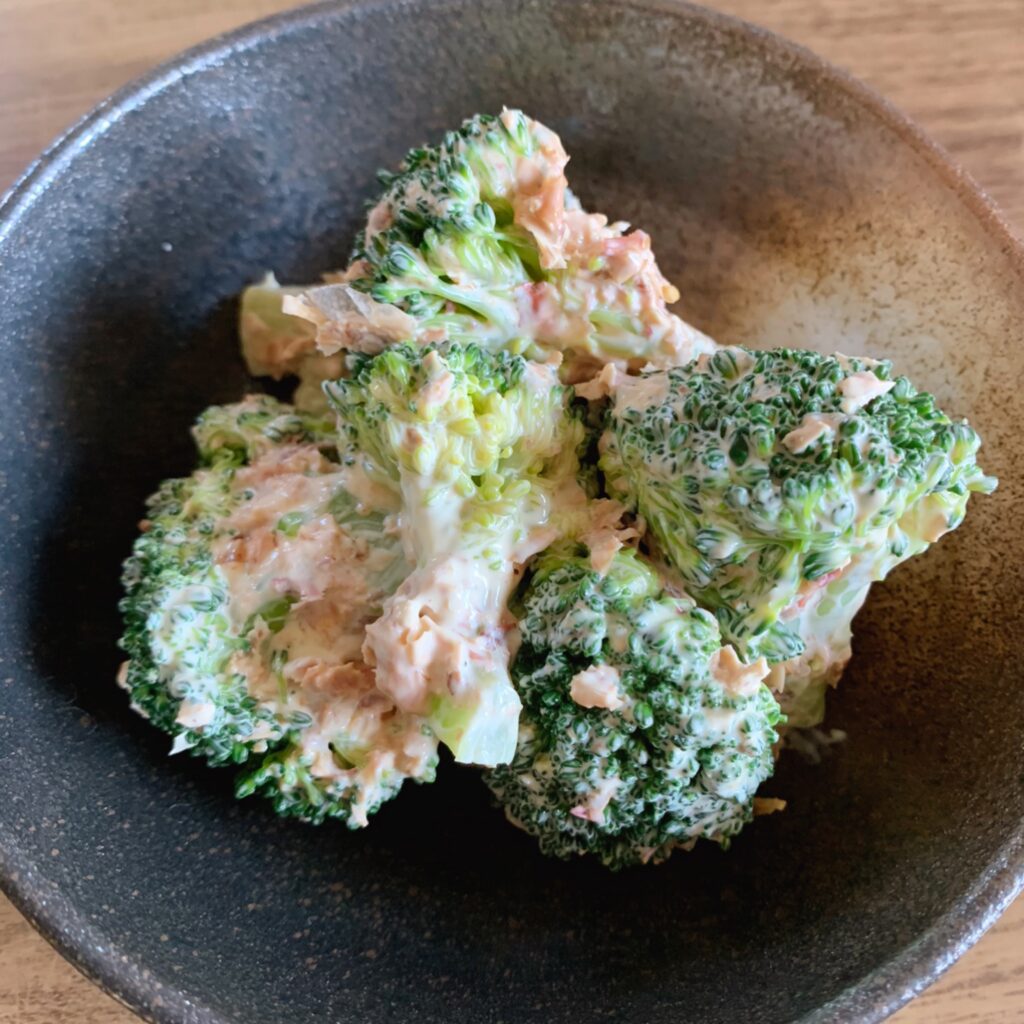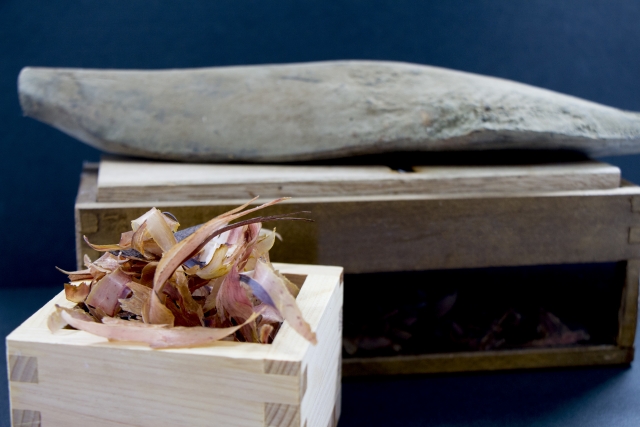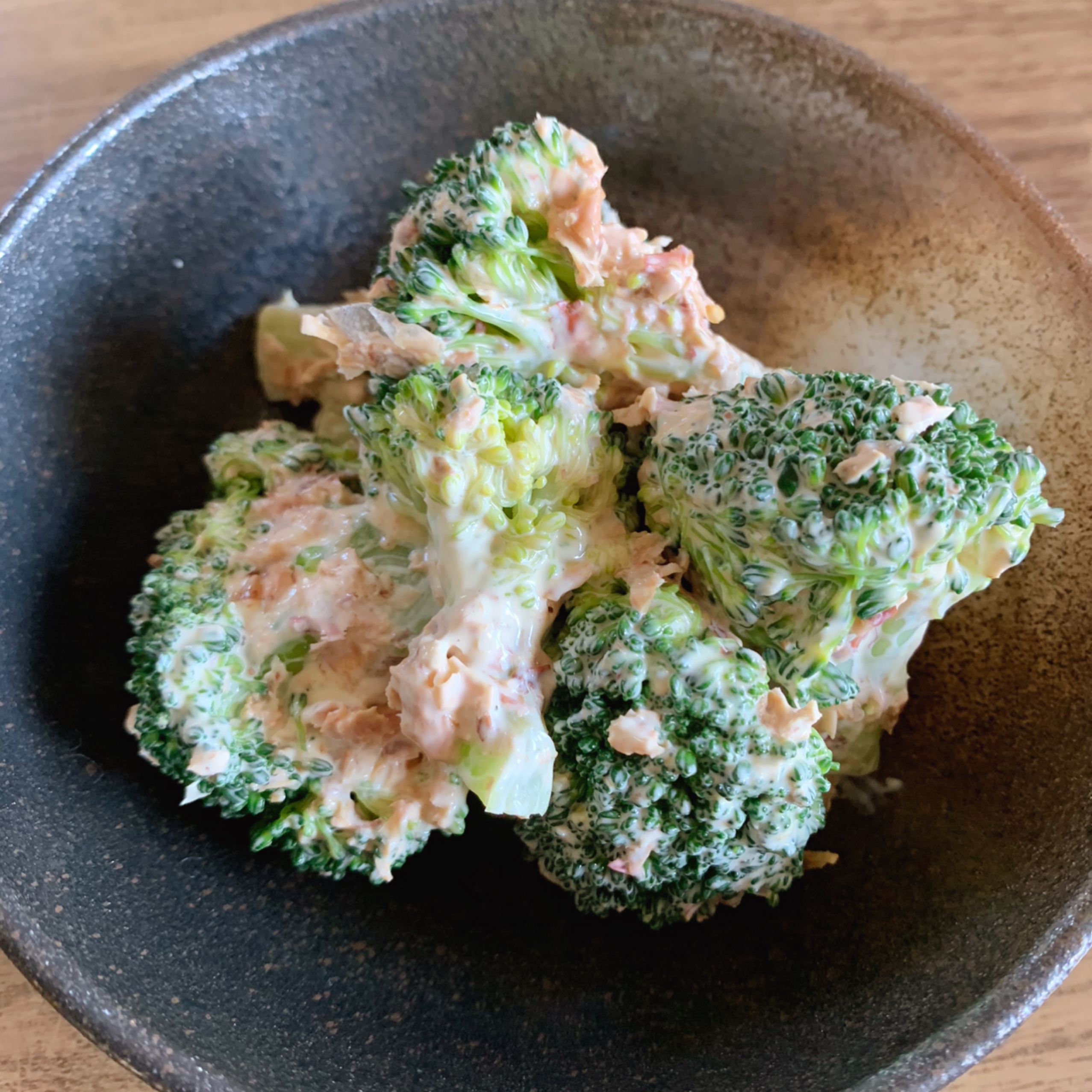
Broccoli okakamayo salad( ブロッコリーおかかマヨサラダ)
bonito flake = katsuobushi = okaka
A salad mixed with broccoli, bonito flakes and mayonnaise. Although it uses few ingredients, bonito flakes are a flavorful food.
Japanese mustard has a different flavor than Western mustard. Mayonnaise alone would be a monotonous flavor, but adding Japanese mustard can give this dish a wonderful change. Be sure to use Japanese mustard.
What kind of food is Katsuo bushi (bonito flakes)??


Katsuobushi is bonito meat that has been boiled and smoked to a moisture content of less than 26%. Surprisingly, katuobushi is one of the fermented foods, which was created to improve its shelf life.
Bonito flakes are known as the “hardest food” among all the foods in the world.
“Katsuobushi” is sometimes called okaka.
In general, the lump before shaving is called bonito flakes, and the shaved bonito flakes are calledkatsuobushi.
Items made from the back part of the bonito are called onishi (male). Those made from the abdomen are called mebushi (female).
After the bonito is smoked and dried, mold is attached to it and dried again. Repeated drying will make it harder and harder.
The purpose of attaching mold is to bring out the unique taste and produce higher quality bonito flakes.
There are also types of bonito flakes that do not involve the process of attaching mold.
To find out, check the product packaging. Products with mold attached are labeled as “katsuo hirehushi”.
There are various types of superior mold used in the production of bonito flakes, but all of them belong to the Aspergillus glaucus family.
A characteristic of this mold is that it has the ability to decompose fat and brings out a pleasant aroma. This lipolytic action has been known since ancient times as being suitable for the digestive function of Japanese people.
About inosinic acid
The secret to the deliciousness of bonito flakes is the umami component “inosinic acid.” Taste is classified into sweet, bitter, salty, sour, and umami. Inosinic acid, which is abundant in bonito flakes, is also one of the umami ingredients.
Other umami components include glutamic acid, which is found in kelp, cheese, and tomatoes, and guanylic acid, which is found in mushrooms.
The “inosinic acid” contained in fish does not exist in the flesh while the fish is alive. When a fish dies, enzymes in its muscles become active and break down ATP (adenosine triphosphate), the muscle’s energy source. During a certain period of this “self-digestion” process, inosinic acid accumulates.
However, if you leave the bonito unattended, it will rot, so it is necessary to process the bonito when it is ripe.
NUTRITION FACTS of Broccoli salad with bonito flakes and karashi mayonnaise
80kcal Protein 5.1g Fat 5.3g Carb 4.9g Salt Equivalent 1.2g
Broccoli salad with bonito flakes and karashi mayonnaiseINGREDIENTS (3SERVINGS)
Broccoli salad with bonito flakes and karashi mayonnaise COOKING INSTRUCTIONS
① Wash the broccoli and cut it into appropriate sizes.
② Place a small amount of hot water and broccoli in a pot, cover, and steam.
There is less loss of vitamins when heating in the microwave. However, the food may not cook evenly and may dry out. I like the steaming method best.
③ Mix mayonnaise, Japanese mustard, and soy sauce.
④ Toss broccoli, bonito flakes and sauce.



コメント